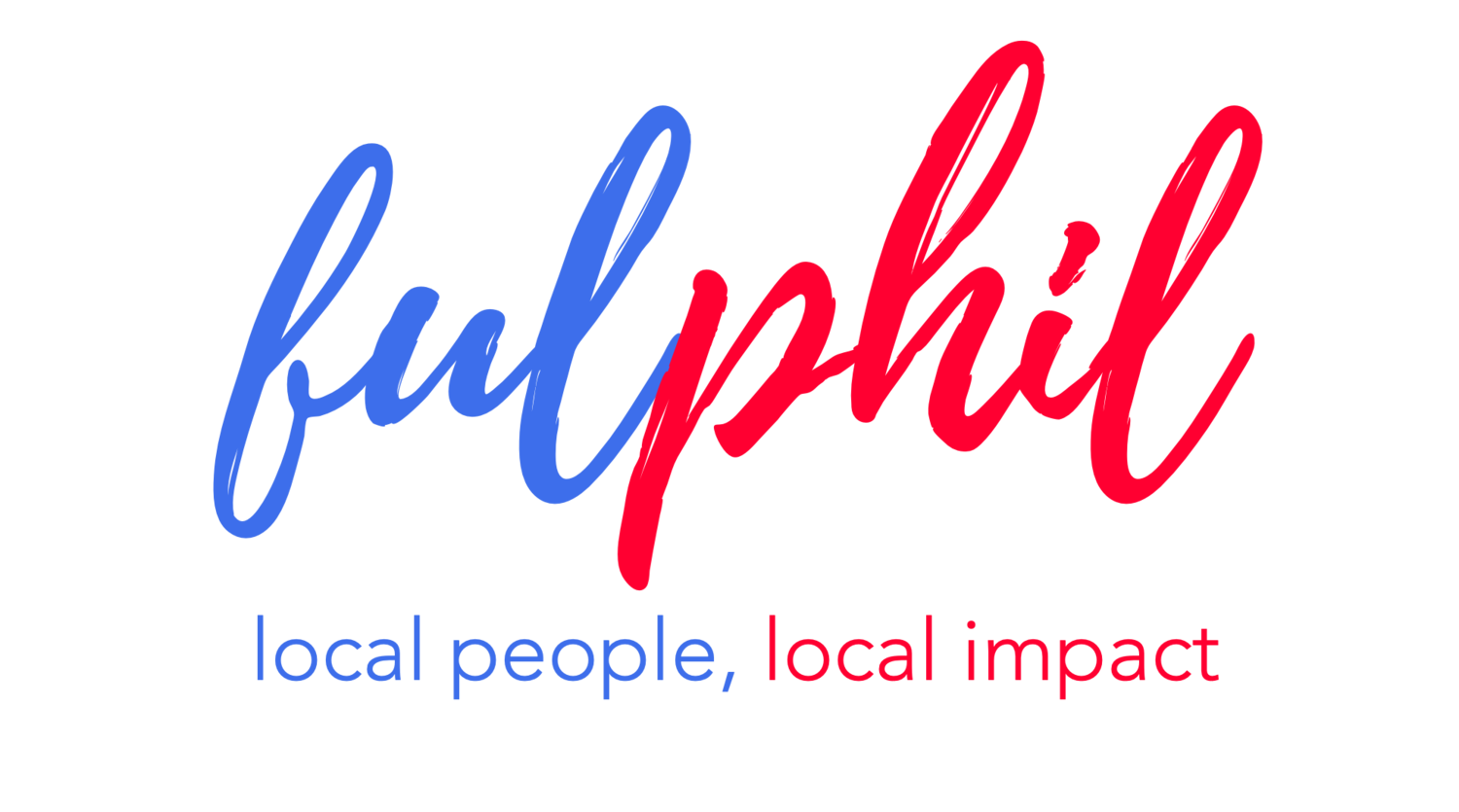Social Entrepreneurship Outline
Redefining Impact & Social Entrepreneurship
Students will develop a newfound understanding of social impact by the Fulphil definition—impact can come in all sorts of shapes and sizes. Our philosophy is that impact does not always have to be big; in fact, sometimes the biggest impact can come in the smallest forms. The idea of social impact is often so nebulous, and consequently, we often believe that big problems demand big world-changing solutions; however, that is not always the case. We are strong believers that the people closest to the problems are closest to the solutions, and global impact must begin locally, and that often begins with identifying issues near and dear to us in our own local communities. By developing this. mindset, we can be prepared to be great social entrepreneurs. Students will also learn the foundations of social entrepreneurship and what distinguishes it from entrepreneurship. Students will learn through an array of case study examples of social enterprises in both the nonprofit and for-profit sectors, like Warby Parker, Tom’s Shoes, Ben & Jerry’s, and so much more!
The Entrepreneurial Mindset
How do you define an entrepreneur? Do you wonder what qualities make someone a successful entrepreneur? In this unit, we will explore different profiles of entrepreneurial mindsets. You are guided to reflect on your accomplishments that excited or challenged you in the best way possible. In interactive, collaborative learning activities that prompt the discovery of your core values and motivations, we will help you identify your entrepreneurial mindset. You are ready to unleash your entrepreneurial potential, so let’s get to it!
Problem-Finding
Problem-solving skills are a must-have, not just for an entrepreneur, but for a student and pretty much everything in life. So exactly how do we go about problem-solving? Before we answer that, we want to introduce the process of problem finding. More specifically, you will learn to distinguish between a symptom and a root cause through root cause analysis (RCA). In this unit, you will have plenty of opportunities to apply RCA to find social problems you are hoping to solve. Yes, we have talked about local problems and impact previously, but they are likely to be linked to global issues. In addition to mastering problem-finding and root cause analysis, we invite you to think about the definition and role of global citizens.
Problem-Solving
We promised to walk you through the problem-solving process, so here it is! Our “local people, local impact” philosophy also applies to our problem-solving approach. At Fulphil, we believe SMALL actions can lead to a BIG impact. In this unit, we will discuss the criteria for good solutions. More importantly, we will explore finding solutions with ideation! What is ideation? While Dictionary.com might not give a straightforward definition, fear not! We will delve into the 5 different stages of ideation. After completing this unit, you will have all the tools to find a solution to the homelessness in your community or encourage healthy diets for school-aged children; the sky's the limit!
Design Thinking
In this section, we will talk about design thinking and its significance in the business process. Don’t worry, you won’t have to draw. Unless you want to. The design thinking process starts with empathy. Using the EDIPT five-step model, you will learn to address user concerns and generate creative solutions. Think of this unit as the extension of the Problem-Solving unit as you advance through the design thinking process. You will learn from fictional superheroes like Ironman and Spider-Man on prototyping. So the chance is…Yes, you might need to draw a little bit to visualize your ideas. If you feel stuck in the creative process, use the SCAMPER method to flesh out your thoughts. We will make sure to equip you with the tools to translate your ideas into reality.
User Interviews
Without the superpower to read others’ minds, can you still develop a product or solution that others want? Of course! First, you will need to understand your own biases and assumptions. In this unit, you will use…you guessed it, design thinking, to validate your assumptions as an entrepreneur. More importantly, you will learn about user experiences (UX) and the role of user interviews in optimizing a product. We all remember feeling irritated on that glitchy website, so let’s make sure you understand your audience to create an easy-to-navigate product. User interviews are about your potential audiences. So we won’t do much of the talking. YOU will have the opportunity to practice user interviews to make sure you ace your interactions with your target audience.
Stakeholder Analysis
The truth is, you are usually not the only interested party when you have a startup or are trying to solve a social problem. Other folks might hold an interest in your company! In entrepreneurship, we call the interested parties stakeholders. Practical tools such as stakeholder mapping will be introduced to help you identify and understand your stakeholders. Now you have narrowed down your targeted audience, you can use this knowledge to continue refining your ideas. By building customer profiles and stakeholder segmentation, you will develop the habit of considering different stakeholders in your business.
Marketing Overview
Now you have thought through your ideas and started developing possible solutions, it’s time to tell the world about what’s brewing. Enter, marketing strategies. Many of us are avid social media users – we have set Screen Time limits to keep us from getting lost in pet reels. Social media is one of the effective marketing tools introduced in this unit. Using information from user interviews, you will learn how to sell your product or solutions! With marketing metrics, we will discuss ways to evaluate your marketing strategies and continue improving on them. Don’t be shy, you will have a chance to learn to market yourself as well!
Competitive Landscape
Think about an industry where competition does not exist. You have a minute. It is hard! Because almost every company has competitors. In this unit, we will explore different types of competitors and spill the tea on the Blockbuster vs. Netflix feud. We will also take a look at Michael Jackson’s Moonwalk and Billie Eilish’s style to understand the definition of competitive advantages. As hardcore music fans, we are as excited about this unit as you are! We will learn to conduct competitor analysis using the SWOT method and reflect on qualities that make you and your product/company stand out. By the end of this unit, we are confident that you will have a clearer idea of where you stand in the competitive landscape and your competitive advantages.
Pricing
If you are ever curious about how businesses set their prices, you are not alone! We, too, wondered why products have different price points. In this unit, we will discuss the three main pricing strategies, cost-based pricing, market-based pricing, and value-based pricing. You are encouraged to try out different pricing strategies to find what works best for you and your company. We will also reflect on some of the lessons from the User Interview unit to brainstorm pricing strategies. Setting prices might be intimidating at first because we don’t want to overcharge or charge too little. But aspiring social entrepreneurs, we are here to tell you that being intentional about prices is another step closer to success!
Marketing Strategies
We are sure you still remember the gist from the Marketing 101 unit, so let’s dive deeper into marketing strategies! We will have an in-depth discussion on social media marketing with examples from our social media darlings, Instagram, Facebook, and Twitter. It’s fun to promote your products and engage with your target audience. But don’t forget the metrics! Metrics will be an invaluable tool to help evaluate whether your marketing strategy is working. At the end of the unit, we invite you to develop your marketing strategy!
Branding
We must say it: branding is not marketing. Now we got that out of the way, let’s get to talking about branding. What do people say about your company when you are not around? Companies have their identities, and branding shapes who and what a company is. In this unit, we will introduce the four components of branding and the possible impacts of branding. From aesthetics to content, we will have a comprehensive overview of brand creations. Learn from Nike, Airbnb and Uber to understand and harness the power of branding!
KPIs
Another fancy acronym? Well, this one is important, and we want you to remember it! KPI stands for Key Performance Indicators. In businesses, a company uses KPIs to determine how well it is doing in terms of strategic and operational goals. In this unit, we will talk about different types of KPIs and how they can help your business stay on track. Different learning activities will introduce you to practical tools, such as the Balanced Scorecard developed by the Harvard Business School!
Public Speaking & Pitching
Did you think we have forgotten about public speaking, one of the most crucial skills in entrepreneurship? No, absolutely we have not! Don’t panic, we won’t force you to deliver an elevator pitch in front of your class, not until you are ready. At Fulphil, we care about people, impact, and relationships. We adopt a similar attitude when it comes to public speaking – connecting with people through storytelling and emotions. In this unit, we will explore critical components of storytelling and dissect successful elevator pitches. Once you have crafted a speech/elevator pitch, we encourage you to use the checklist provided to evaluate your content and delivery. “Ding!” The elevator door just opened, are you ready to pitch?

